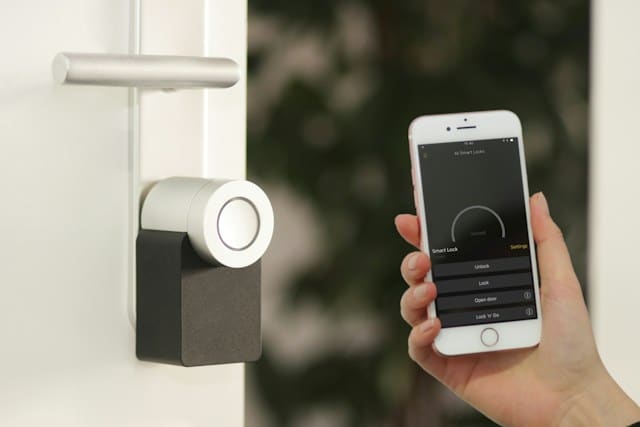How Can IoT Sensors Improve Indoor Air Quality Monitoring?

The quality of our indoor air is crucial for our health, comfort, and overall well-being. However, the monitoring of indoor air quality (IAQ) is often overlooked, despite the clear connection between poor IAQ and various health issues.
With the advancement of technology, we can now leverage Internet of Things (IoT) sensors to improve the monitoring of indoor air quality. IoT technology is all about connecting everyday objects to the internet, enabling us to garner valuable data from these devices. IoT sensors embedded in our building systems can track different features of our indoor air, including pollution levels, temperature, humidity, and more. In this article, we will explore how IoT sensors can enhance indoor air quality monitoring.
A voir aussi : How Are Wearable IoT Devices Being Used in Employee Health Monitoring?
The Importance of Indoor Air Quality Monitoring
Before we delve into the role of IoT sensors in monitoring indoor air quality, let’s first establish the importance of indoor air quality monitoring. The air in our homes, workplaces, and other indoor spaces can contain pollutants that pose a threat to our health. These pollutants can come from multiple sources, such as building materials, cleaning products, indoor activities, and outdoor pollution.
Monitoring indoor air quality is significant for several reasons. First, it helps to identify potential health hazards, such as high levels of carbon monoxide or airborne particles. Second, it aids in maintaining a comfortable indoor environment, by keeping track of factors like temperature and humidity. Finally, monitoring can guide actions to improve indoor air quality, such as adjusting ventilation systems, reducing sources of pollution, or implementing air purification solutions.
Cela peut vous intéresser : What Are the Latest Trends in IoT for Garden and Lawn Care?
How IoT Sensors Work in Air Quality Monitoring
Now, let’s discuss how IoT sensors function in air quality monitoring. IoT technology integrates physical devices with software, allowing them to communicate and exchange data with each other through the internet. In the context of air quality monitoring, IoT sensors are typically embedded in various parts of a building’s infrastructure.
These sensors can detect and measure a variety of factors related to air quality, including the levels of different pollutants, temperature, humidity, and air pressure. This data is then wirelessly transmitted to a central system or platform. Here, the data can be analyzed in real-time or stored for future analysis. This system can be accessed by users at any time, providing them with up-to-date information about their indoor air quality.
Benefits of IoT Sensors in Indoor Air Quality Monitoring
The application of IoT sensors in indoor air quality monitoring offers several benefits. Firstly, these sensors provide real-time data. This allows for immediate action when air quality issues are detected, such as increasing ventilation or addressing a source of pollution. This real-time monitoring is far more efficient than traditional methods, which often involve taking periodic samples and sending them to a lab for analysis.
Secondly, IoT sensors offer a high degree of accuracy. These sensors are often highly sensitive and precise, making them able to detect even minute changes in air quality. Moreover, they can measure a wide range of factors, providing a comprehensive picture of indoor air quality.
Thirdly, IoT sensors contribute to a healthier indoor environment. By providing continuous monitoring and data about air quality, these sensors can guide actions to improve air quality. For example, they can inform decisions about ventilation, air purification, and other strategies to enhance indoor air quality. This not only improves comfort but also reduces the risk of health issues associated with poor air quality.
The Future of IoT Sensors in Indoor Air Quality Monitoring
As we move forward, the role of IoT sensors in indoor air quality monitoring is likely to continue expanding. These devices are becoming increasingly accessible, affordable, and sophisticated. As a result, more and more buildings are likely to incorporate IoT sensors into their infrastructure.
Furthermore, advancements in data analytics and machine learning are enhancing the capabilities of these systems. For instance, predictive analytics can be used to forecast future changes in air quality, based on historical data and trends. This could enable proactive measures to maintain good indoor air quality.
Moreover, research in this area is ongoing. Scholars are exploring new sensor technologies, algorithms for data analysis, and applications for indoor air quality monitoring. As evidence of this, a search for "IoT sensors and air quality" on Google Scholar returns over 20,000 results.
In short, IoT sensors are set to revolutionize the way we monitor and manage indoor air quality. As we embrace this technology, we can look forward to healthier, more comfortable indoor environments.
Not Just a Trend, but a Necessity
It is clear that IoT sensors in monitoring indoor air quality is not just a passing trend, but a necessity for our rapidly evolving world. As we spend more time indoors, the importance of maintaining high-quality indoor air cannot be overstated. By leveraging IoT sensors, we can monitor and manage our indoor air quality more effectively, contributing to better health and well-being.
While this technology is still developing, it is already making a significant impact. As we continue to innovate and refine this technology, we can expect to see even more impressive advancements in indoor air quality monitoring.
We have explored the importance of indoor air quality, the role of IoT sensors in monitoring it, the benefits of these sensors, and the future of this technology. As we move forward, we must remember to continually adapt and innovate to meet the changing needs of our world. We hope that this article has provided valuable insights and sparked interest in this crucial topic.
The Versatility of IoT Sensors in Indoor Air Quality Monitoring
The versatility of IoT sensors in indoor air quality monitoring is another compelling reason for their increasing usage. Not only can these sensors monitor various aspects of air quality such as temperature, humidity, particulate matter, and carbon dioxide levels, they can also be integrated with other systems in a building. For instance, they can be linked to HVAC systems, enabling automated adjustments to maintain optimal indoor air conditions.
The capability of IoT-based air quality monitoring systems to seamlessly communicate with other devices is a noteworthy advantage. In real-time, these systems can relay information to, say, air purifiers or ventilation systems, triggering them to switch on or adjust their settings as needed. In this way, IoT sensors not only monitor but also actively improve air quality.
Moreover, IoT sensors can be tailored to specific needs. Whether it’s a home, an office, a school, or a factory, these sensors can be calibrated to monitor the air quality parameters that are most relevant to each setting. The versatility of IoT sensors therefore underscores their significance in indoor air quality monitoring.
The Role of IoT Sensors in Air Pollution Monitoring
Air pollution is a global concern that poses severe threats to human health and the environment. Indoor air is not exempt from this issue; in fact, the concentration of pollutants can be higher indoors than outdoors. Monitoring indoor air pollution becomes a necessity and this is where IoT sensors come into play.
IoT-based air pollution monitoring systems can detect a wide range of pollutants, including carbon dioxide, volatile organic compounds (VOCs), particulate matter, and more. These systems can provide real-time data about pollutant levels, enabling immediate corrective actions if necessary.
Furthermore, IoT sensors can potentially contribute to broader efforts to combat air pollution. The data collected from these devices can be used to understand patterns of indoor air pollution, identify sources of pollutants, and develop effective strategies to minimize exposure.
As the International Conference on Internet of Things has noted, the integration of IoT technology in air pollution monitoring is a promising area of research and application. Considering the gravity of air pollution as a global issue, the role of IoT sensors in monitoring and managing this problem could be critical.
Conclusion: Embracing IoT in Indoor Air Quality Monitoring
As we have discussed in depth, IoT sensors can revolutionize indoor air quality monitoring. They offer real-time, accurate, and comprehensive data about a range of air quality parameters. This technology’s benefits are manifold – from improving the comfort of our indoor environments to protecting our health from potential hazards.
Given the increasing prevalence of smart homes and buildings, the incorporation of IoT in indoor air quality monitoring seems inevitable. It is no longer just a cutting-edge trend, but a necessity in our increasingly interconnected and health-conscious world.
There are challenges to be addressed, of course. Data privacy and security, the integration of different systems, and the need for user-friendly interfaces are just a few. However, as a recent search on Google Scholar shows, research in this field is flourishing.
As we move forward, it is crucial that we continue to innovate and adapt to meet the ever-evolving needs of our world. And as consumers, we should stay informed and proactive in leveraging technology to enhance our indoor environments. After all, the air we breathe indoors is a vital determinant of our health and well-being. So, let’s embrace the future of indoor air quality monitoring with IoT.
